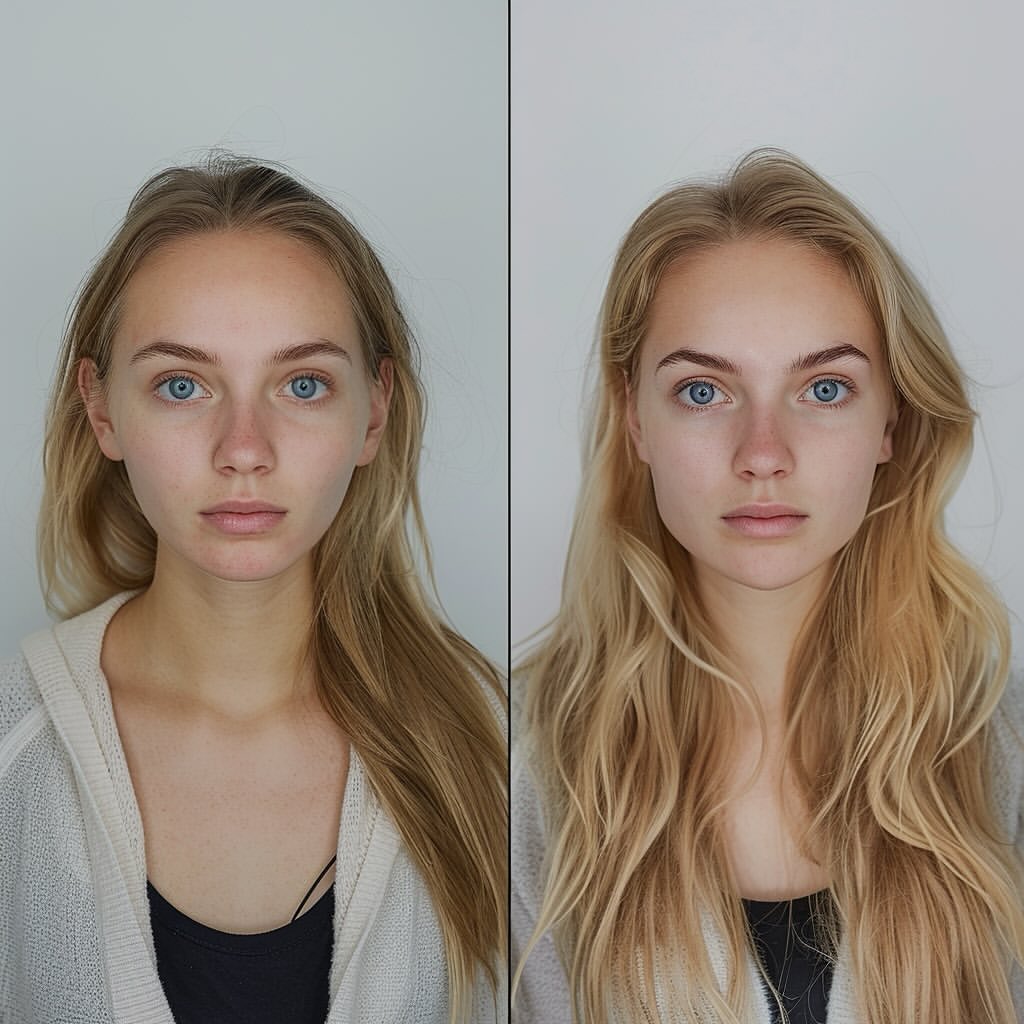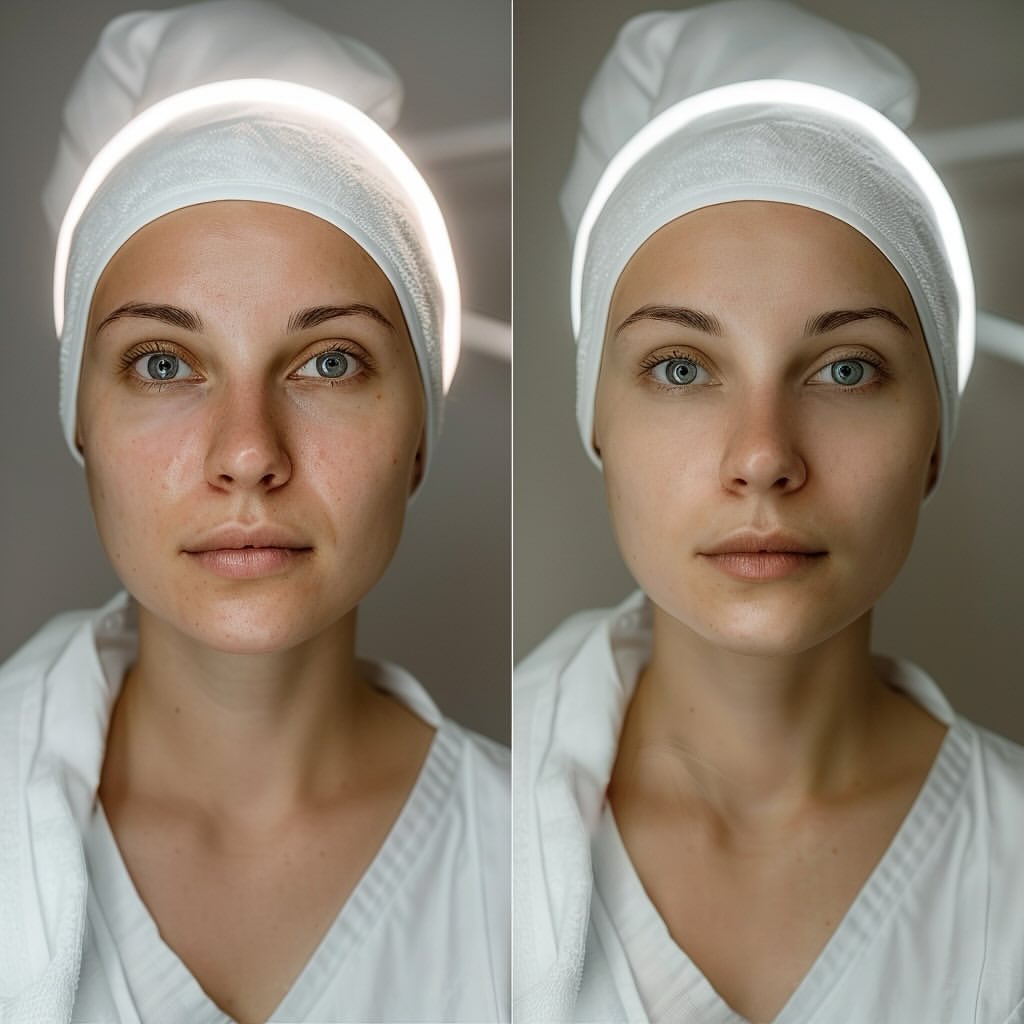Botox for TMJ and Bruxism Treatments in London
Aesthetic Clinic delivers advanced botulinum toxin therapy for temporomandibular joint dysfunction and bruxism management, providing patients with effective relief from chronic jaw pain and muscle tension. Our medical approach utilises precise neuromuscular intervention to address hyperactive masseter and temporalis muscles responsible for teeth grinding, jaw clenching, and associated TMJ complications. Located in central London, we offer comprehensive assessment protocols combining clinical expertise with evidence-based injection techniques to manage complex orofacial pain syndromes. This therapeutic application addresses both nocturnal and diurnal bruxism patterns whilst providing significant improvement in TMJ-related symptoms including joint pain, muscle fatigue, and functional limitations. Our multidisciplinary approach ensures optimal patient outcomes through coordinated care addressing the underlying neuromuscular dysfunction contributing to these debilitating conditions.




Thousands of satisfied customers

Botox for TMJ and Bruxism Cost: Pricing Overview in London
Botulinum toxin TMJ and bruxism treatments across London reflect the specialised medical expertise required for complex orofacial pain management:
- Single TMJ treatment session: £650-£1,100 across premium central London medical practices
- Comprehensive bruxism management protocol: £750-£1,300 depending on muscle groups addressed and practitioner specialisation
- Combined TMJ and bruxism treatment: £1,200-£1,800 for complete temporomandibular dysfunction management
- Initial consultation and diagnostic assessment: £150-£250 (typically credited toward treatment investment)
- Follow-up maintenance sessions: £600-£950 based on individual response patterns and treatment longevity
- Multi-muscle treatment packages: £1,500-£2,400 when addressing masseter, temporalis, and pterygoid muscle groups
Harley Street and specialist orofacial pain clinics command premium rates reflecting their advanced training in TMJ disorders and neuromuscular dysfunction management. Treatment costs vary significantly based on muscle groups requiring intervention, with comprehensive protocols addressing multiple contributing factors typically requiring higher botulinum toxin units. Many London practices offer treatment packages providing enhanced value for patients requiring ongoing TMJ and bruxism management.
Before and After Botox for TMJ and Bruxism Treatment
Patients experience substantial improvement in pain levels and functional capacity following targeted muscle relaxation therapy. The neuromuscular intervention creates measurable changes in jaw function and comfort, delivering:
- Significant reduction in jaw pain intensity reported within 7-14 days following treatment administration
- Decreased muscle tension and stiffness in masseter and temporalis regions during rest periods
- Improved jaw opening range without associated pain or limitation previously experienced
- Elimination of morning headaches related to nocturnal teeth grinding and muscle tension
- Reduced tooth wear and dental damage through decreased clenching force and frequency
- Enhanced sleep quality due to reduced bruxism-related sleep disruption patterns
- Improved quality of life scores measured through validated TMJ disability assessment tools
Initial therapeutic effects typically manifest within one week as muscle hyperactivity diminishes, with optimal pain relief achieved by 2-4 weeks post-injection. The sustained muscle relaxation provides lasting relief from chronic orofacial pain whilst preserving essential jaw functions including chewing, speaking, and swallowing. Patients frequently report transformative improvements in daily comfort levels and functional capacity as TMJ symptoms resolve.

What is Botox for TMJ and Bruxism?
Botulinum toxin represents a clinically proven therapeutic intervention for temporomandibular joint dysfunction and bruxism management through selective muscle relaxation and pain modulation. This treatment addresses the underlying neuromuscular dysfunction contributing to excessive jaw muscle activity and associated pain syndromes.
TMJ disorders involve complex interactions between joint mechanics, muscle function, and neurological pain pathways. Bruxism, characterised by involuntary teeth grinding and jaw clenching, creates excessive forces that overload temporomandibular joint structures and surrounding musculature.
Therapeutic mechanisms of botulinum toxin include:
- Selective denervation of hyperactive jaw muscles reducing excessive contractile activity
- Interruption of pain-spasm cycles perpetuating chronic orofacial discomfort
- Modulation of sensory nerve pathways transmitting TMJ-related pain signals
- Reduction of inflammatory mediators released during chronic muscle tension
- Prevention of muscle memory patterns maintaining dysfunctional jaw positioning
- Restoration of normal muscle resting tone without complete functional paralysis
The treatment requires comprehensive understanding of orofacial anatomy and TMJ biomechanics to achieve therapeutic benefit without compromising essential jaw functions. Precise injection techniques target specific muscle regions whilst preserving normal chewing, speaking, and swallowing capabilities essential for daily activities.
Botox for TMJ and Bruxism Process: Step by Step
Our comprehensive TMJ and bruxism treatment protocol ensures optimal therapeutic outcomes through systematic medical evaluation and precise injection techniques:
- Comprehensive TMJ Assessment: Detailed evaluation of joint function, pain patterns, and muscle hyperactivity using standardised diagnostic criteria
- Bruxism Pattern Analysis: Assessment of grinding and clenching behaviours through clinical examination and patient history documentation
- Functional Range Testing: Measurement of jaw opening capacity, lateral movements, and pain-free functional ranges
- Muscle Palpation Examination: Systematic evaluation of masseter, temporalis, and pterygoid muscle tension and trigger point identification
- Medical History Documentation: Review of previous TMJ treatments, dental interventions, and concurrent medical conditions
- Treatment Planning: Strategic injection site selection based on individual muscle involvement patterns and symptom distribution
- Pre-Treatment Preparation: Thorough skin cleansing and optional topical anaesthesia for enhanced patient comfort
- Precise Botulinum Toxin Administration: Systematic injection delivery using EMG guidance when indicated for optimal muscle targeting
- Post-Treatment Assessment: Immediate evaluation of injection sites and baseline functional measurement documentation
Treatment sessions require 30-45 minutes depending on muscle groups addressed and complexity of individual presentation. Patients report minimal discomfort during procedures, with most experiencing immediate relief from pre-treatment anxiety as injections are completed efficiently.

Benefits of Botox for TMJ and Bruxism
Botulinum toxin therapy offers substantial advantages over traditional TMJ and bruxism management approaches through its targeted neuromuscular intervention:
Rapid Pain Relief
Significant reduction in orofacial pain typically occurs within days of treatment, providing swift relief from chronic discomfort that may have persisted for months or years.
Non-Invasive Treatment Approach
Avoids surgical interventions, oral appliances, or systemic medications with associated side effects, offering patients a minimally invasive therapeutic option.
Targeted Muscle Relaxation
Precise injection techniques address specific hyperactive muscles whilst preserving normal jaw function, creating therapeutic benefit without functional compromise.
Long-Duration Efficacy
Single treatment sessions provide 3-6 months of sustained symptom relief, offering extended periods without TMJ pain or bruxism-related complications.
Improved Sleep Quality
Reduction in nocturnal bruxism patterns leads to better sleep quality for both patients and their partners, addressing secondary health impacts.
Dental Protection Benefits
Decreased grinding forces protect teeth from further wear, reducing long-term dental complications and associated treatment costs.
Quality of Life Enhancement
Comprehensive symptom relief allows return to normal activities previously limited by chronic pain and functional restrictions.

Our Botox for TMJ and Bruxism Treatments
Aesthetic Clinic provides comprehensive botulinum toxin protocols addressing various presentations of TMJ dysfunction and bruxism patterns:
Standard TMJ Pain Management
Targeted masseter and temporalis muscle injection protocols designed to reduce chronic orofacial pain and muscle tension.
Comprehensive Bruxism Treatment
Multi-muscle approach addressing both masseter and temporalis hyperactivity to eliminate teeth grinding and clenching behaviours.
Combined TMJ-Bruxism Protocol
Integrated treatment addressing both joint dysfunction and muscle hyperactivity through coordinated injection strategies and optimal unit allocation.
Chronic Pain Management Programme
Specialised protocols for patients with long-standing TMJ disorders requiring intensive muscle relaxation and pain modulation approaches.
Maintenance Treatment Series
Ongoing care designed to prevent symptom recurrence and maintain functional improvements through regular intervention scheduling.
Each treatment utilises pharmaceutical-grade botulinum toxin with precise anatomical targeting based on individual muscle involvement patterns, pain distribution, and functional assessment findings to ensure optimal therapeutic outcomes.
Why Choose Us?
Aesthetic Clinic represents London’s premier destination for medical TMJ and bruxism management through advanced botulinum toxin expertise:
Specialist Orofacial Pain Training
Our practitioners possess advanced qualification in TMJ disorders and understand complex neuromuscular interactions contributing to orofacial pain syndromes.
Evidence-Based Treatment Protocols
Our approaches follow established clinical guidelines incorporating latest research in botulinum toxin applications for TMJ and bruxism management.
Comprehensive Diagnostic Assessment
Thorough evaluation protocols ensure accurate diagnosis and appropriate treatment selection for individual patient presentations and symptom patterns.
Advanced Injection Techniques
Precision targeting methods including EMG guidance when indicated ensure optimal therapeutic outcomes whilst preserving essential jaw functions.
Multidisciplinary Care Coordination
Integration with dental professionals and physiotherapists when indicated provides comprehensive management of complex TMJ presentations.
Clinical Environment Excellence
Strict medical facility standards ensure optimal safety and sterility during all diagnostic and treatment procedures.
Documented Treatment Success
Extensive clinical experience managing TMJ and bruxism patients with comprehensive outcome documentation demonstrating consistent therapeutic efficacy and patient satisfaction.
Frequently Asked Questions
How quickly does botulinum toxin provide TMJ and bruxism relief?
Most patients experience initial pain reduction within 3-7 days, with optimal therapeutic benefits achieved by 2-4 weeks post-treatment. The gradual onset allows natural adaptation to reduced muscle tension whilst preserving essential jaw functions. Maximum efficacy typically persists for 3-6 months before maintenance treatments become necessary.
Will botulinum toxin treatment affect my ability to chew or speak normally?
Properly administered treatment preserves essential jaw functions whilst reducing excessive muscle activity. Most patients maintain normal chewing, speaking, and swallowing capabilities throughout the treatment period. Temporary mild weakness may occur initially but resolves as muscles adapt to therapeutic relaxation levels.
Who represents appropriate candidates for TMJ and bruxism botulinum toxin treatment?
Ideal candidates experience chronic TMJ pain, documented bruxism patterns, or muscle-related orofacial discomfort that impacts daily activities. During medical consultation, we evaluate symptom severity, previous treatment responses, contraindications, and realistic therapeutic expectations to determine treatment appropriateness.
How many botulinum toxin units are required for effective TMJ treatment?
Treatment typically requires 25-50 units per masseter muscle and 10-25 units per temporalis muscle, with total requirements ranging from 70-150 units depending on muscle involvement and symptom severity. Precise calculations consider individual anatomical characteristics and clinical assessment findings.
What should I expect during recovery from TMJ botulinum toxin treatment?
Post-treatment, mild injection site tenderness may occur for 24-48 hours. Gradual pain relief typically begins within one week, with optimal benefits achieved by month one. Normal activities resume immediately, with recommendations to avoid excessive jaw manipulation for 24 hours to optimise treatment outcomes and prevent complications.




